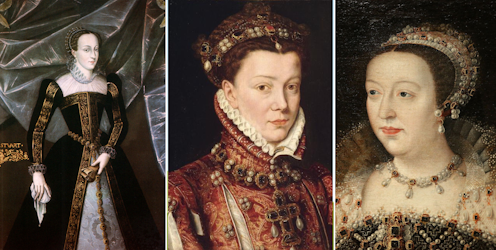delving into the emotional and political lives of three young Renaissance queens
- Written by Jessica O'Leary, Research Fellow, Gender and Women's History Research Centre, Australian Catholic University

Young Queens tells the entwined stories of Catherine de’ Medici, her daughter Elisabeth, Queen of Spain and her daughter-in-law, Mary, Queen of Scots. Each of these women was a different type of queen: Queen Regnant, Queen Consort and Dowager Queen.
Author Leah Redmond Chang delves into the early lives of each queen, interweaving the relational, emotional and political challenges these women encountered over the course of their lives. The book is a remarkable attempt to capture the tumultuous nature of the 16th century in Europe through the eyes of three influential queens.
Review: Young Queens: Three Renaissance Women and the Price of Power – Leah Redmond Chang (Bloomsbury)
Queenship studies has exploded in the last 30 years, as scholars rewrite master narratives to recover women’s histories, adding complexity to how we understand power in the past. Queens were not accessories but complex individuals whose actions and relationships influenced the political dynamics of royal spaces.














